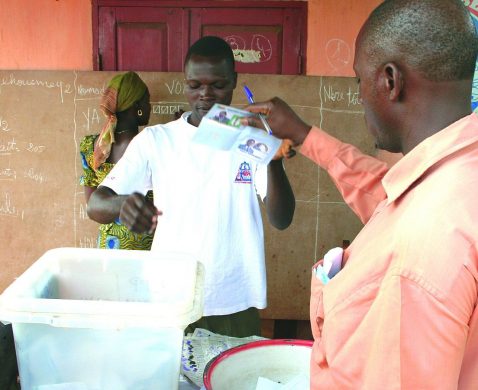LONDON, 15 February, 2017 (London School of Hygiene & Tropical Medicine): The majority of cases during the 2014-15 West African Ebola outbreak were down to a small percentage of patients, or ‘super-spreaders’, according to new research published in Proceedings of the National Academy of Sciences.
Co-authored by the London School of Hygiene & Tropical Medicine and led by Princeton University, the research found that 61% of cases were caused by 3% of infected people. The authors noted that their findings were a conservative estimate, since they focussed on people who had been buried safely, whereas it is known that unsafe funerals can be a major source of onwards transmission of Ebola.
The study highlights the significance of super-spreading and the need to better identify the social or biological factors behind it. It might then be possible to improve measures designed to control the spread of infectious disease during epidemics.
Focusing on cases in and around Freetown, Sierra Leone, the researchers concluded that children under 15 years old and adults over 45 were more likely to infect a large number of others. Although the authors did not have access to information which would have allowed them to investigate further, it’s possible a combination of factors could be behind this effect.
Både biologiske og sociale årsager
Biologically, those who experienced more severe disease may have shed more infectious material and therefore been more infectious than others. Socially, the groups found to be causing more onwards transmission may have been cared for, or visited by, more people than others when they were ill and at their most infectious.
Dr Sebastian Funk, Director of the Centre for the Mathematical Modelling of Infectious Diseases at the London School of Hygiene & Tropical Medicine and study co-author, said:
“Our best chance of preventing widespread outbreaks is to clamp down on them as soon as they begin. Studies such as this one provide vital clues on how best to do that, including which groups of people are the most infectious, but we also need to know what occasions or events are catalysts for transmission. The scale of the recent Ebola epidemic in West Africa was unprecedented and early control measures failed. Targeting measures at the individuals and social contexts most likely to cause further cases may have helped end it more quickly.”
The concept of super-spreaders is not new, and there is a greater appreciation that not all individuals play an equal role in spreading an infectious disease. Super-spreaders have also been implicated in other outbreaks, including severe acute respiratory syndrome (SARS) in 2003; and the more recent Middle East respiratory syndrome (MERS) in 2012. This study showed how super-spreading changed over time, as the epidemic progressed, and as control measures were implemented.
Publication
Max S. Y. Lau, Benjamin Douglas Dalziel, Sebastian Funk, Amanda McClelland, Amanda Tiffany, Steven Riley, C. Jessica E. Metcalf, Bryan T. Grenfell. Spatial and temporal dynamics of superspreading events in the 2014–2015 West Africa Ebola epidemic. Proceedings of the National Academy of Sciences. DOI: 10.1073/pnas.1614595114














